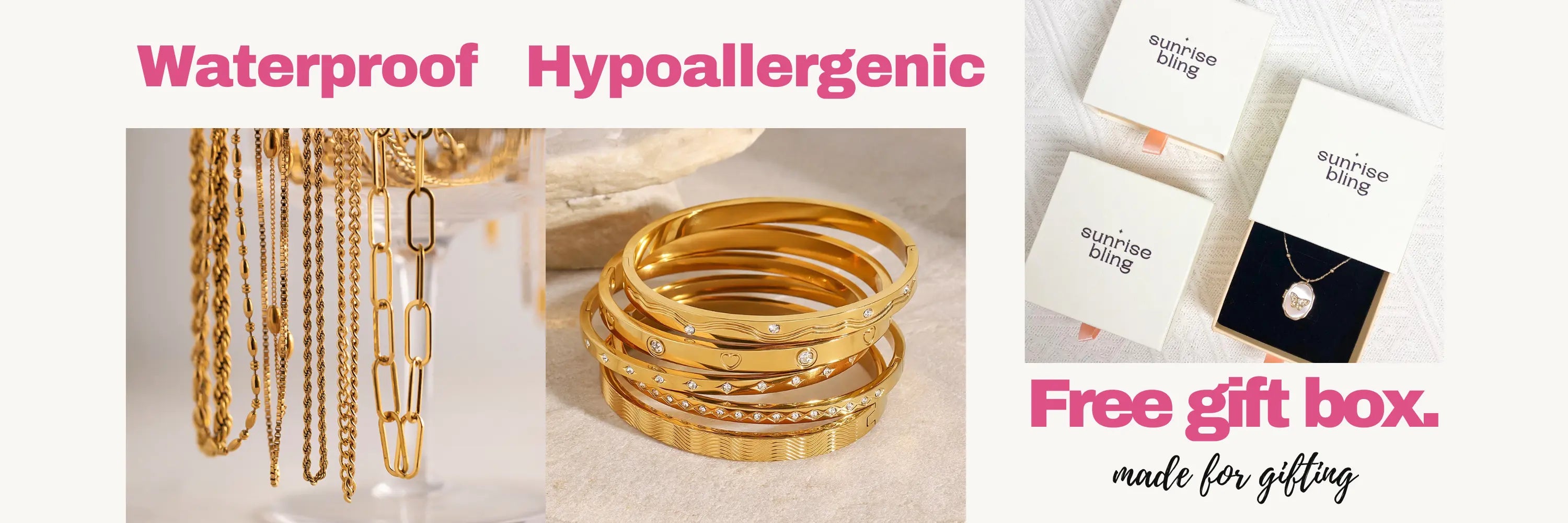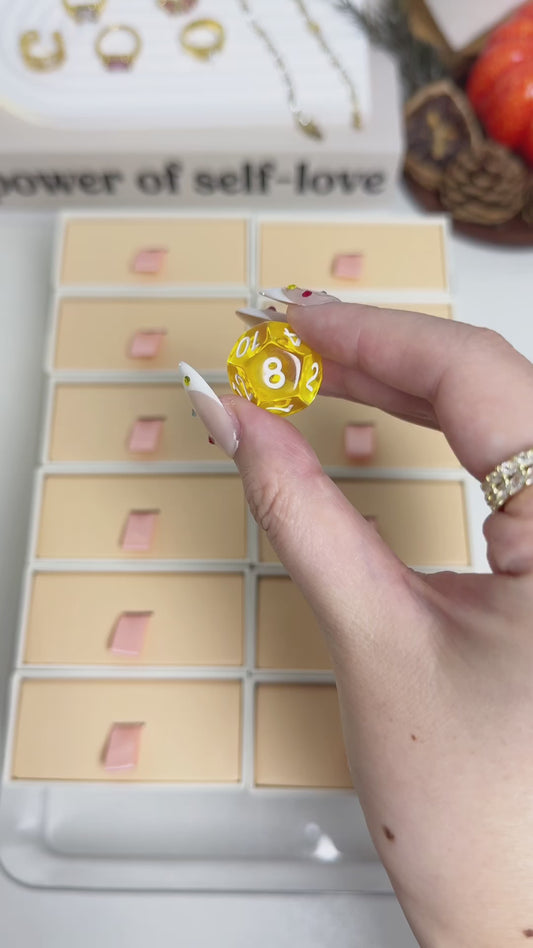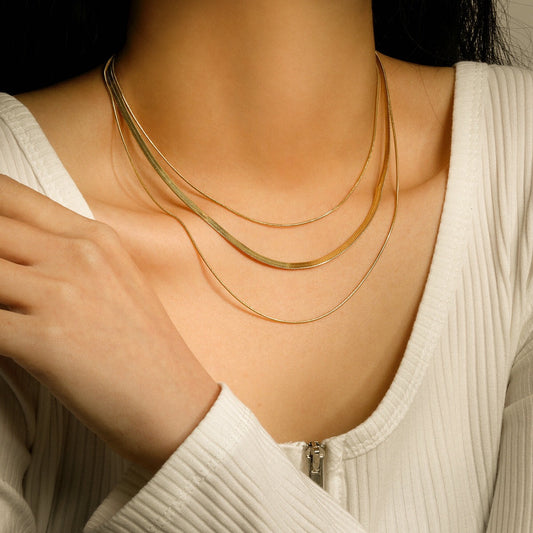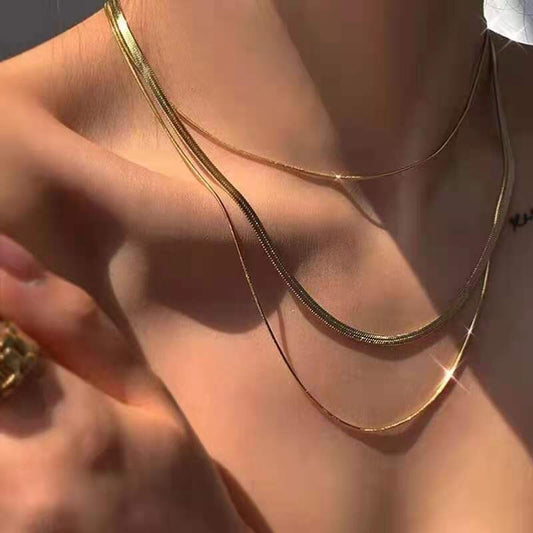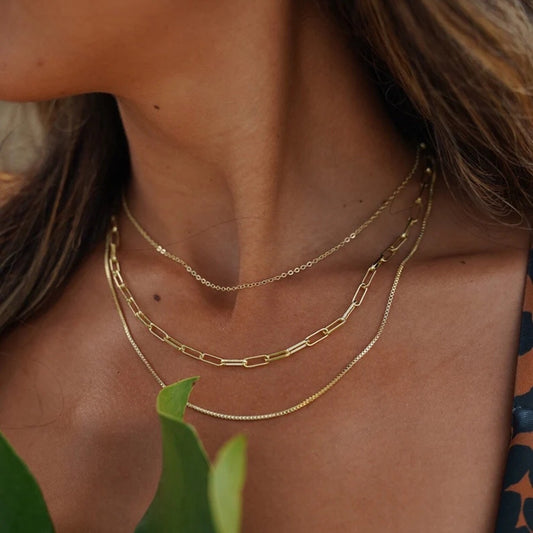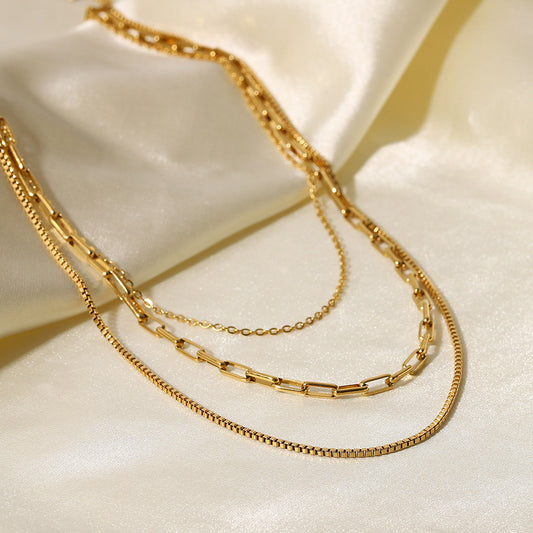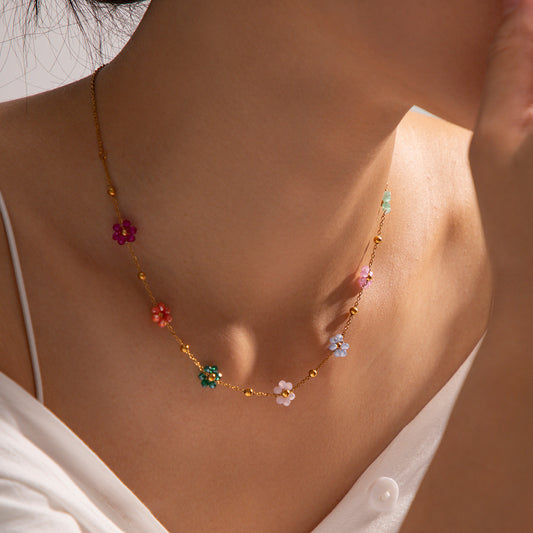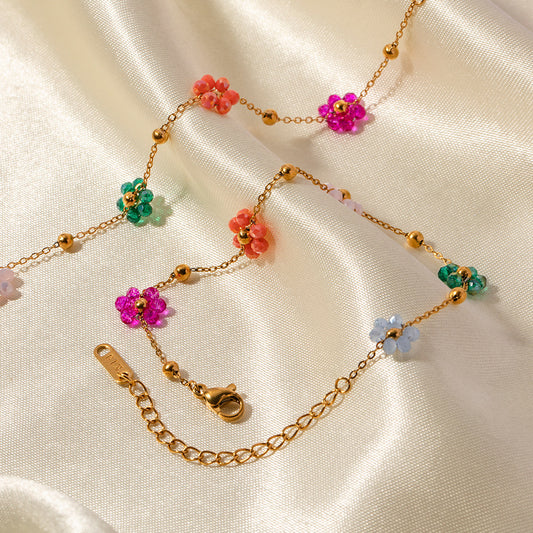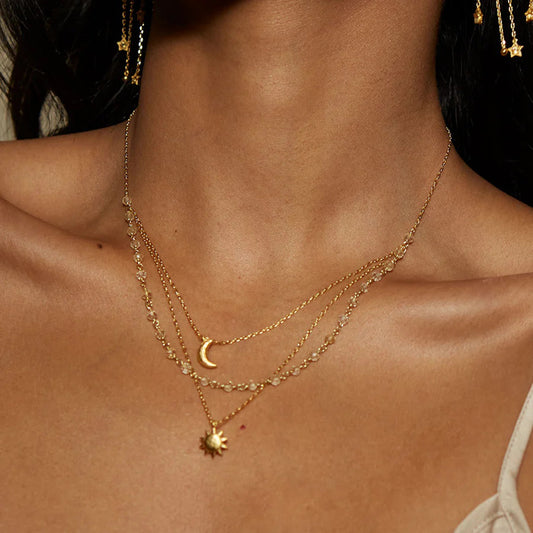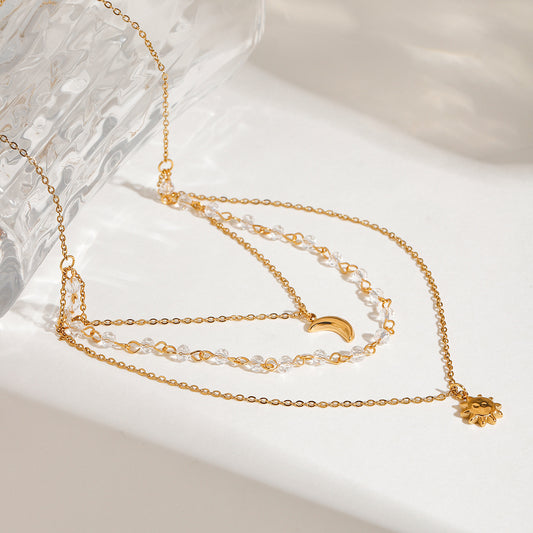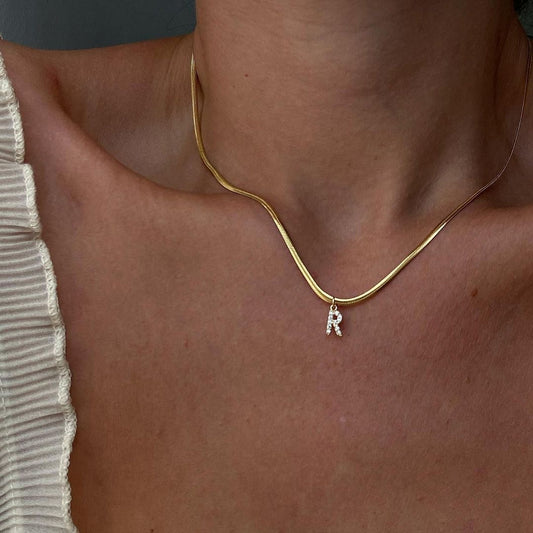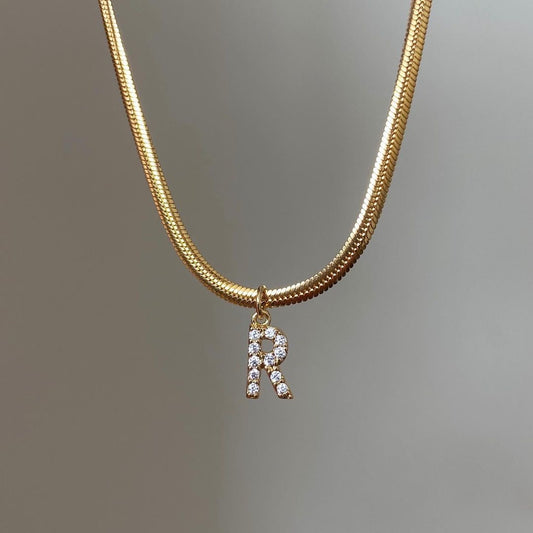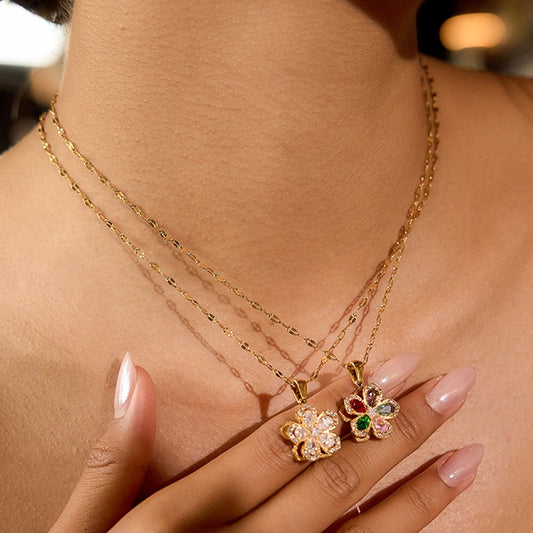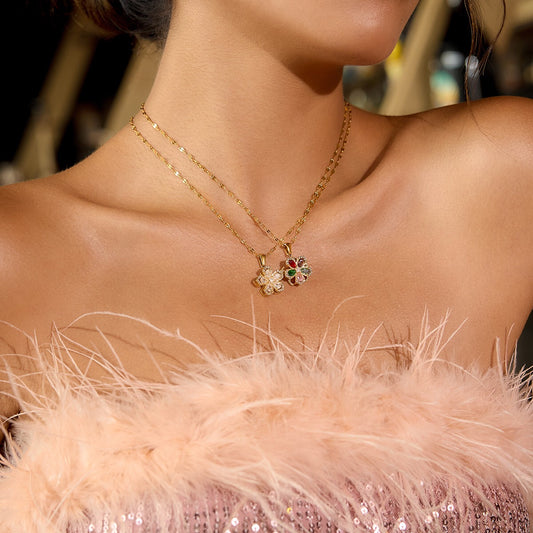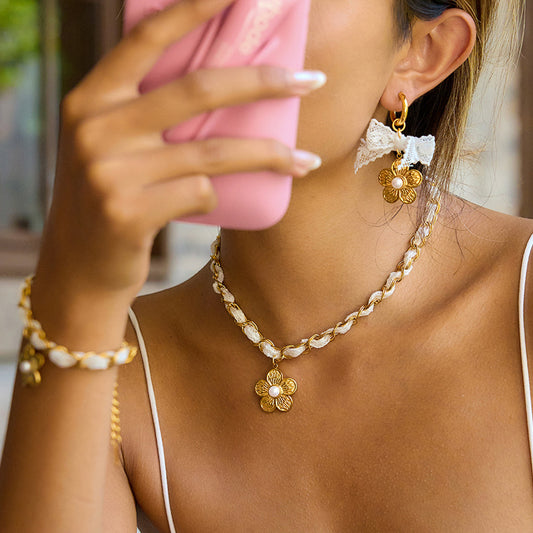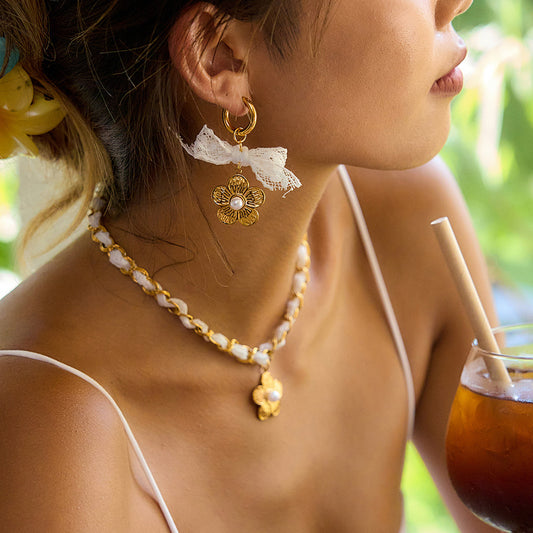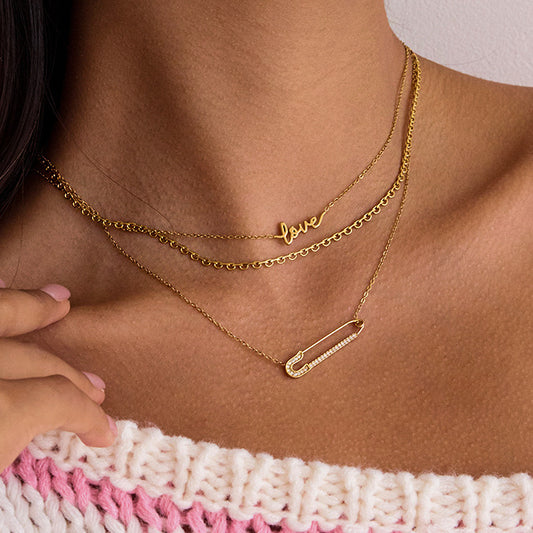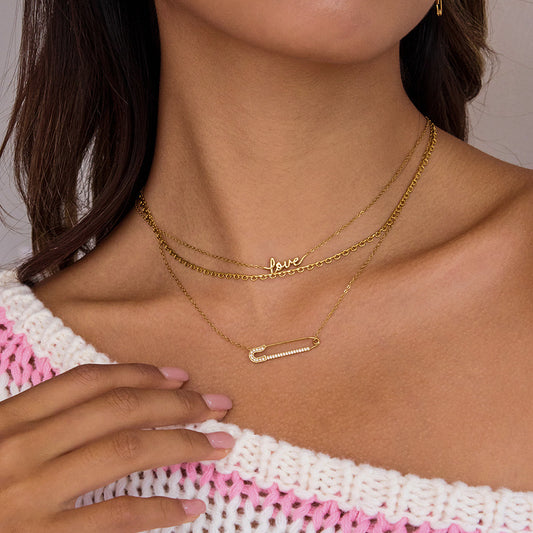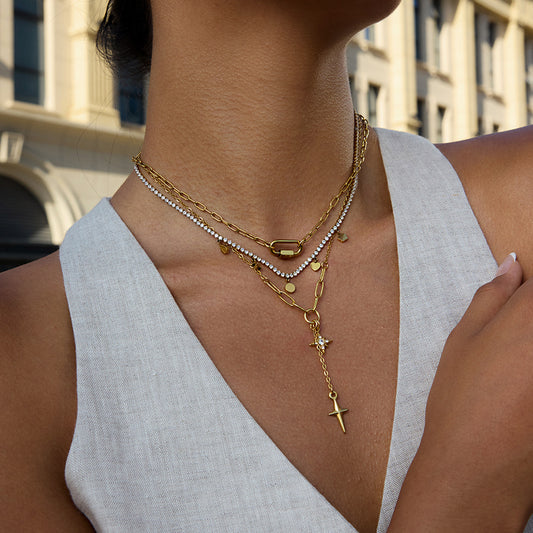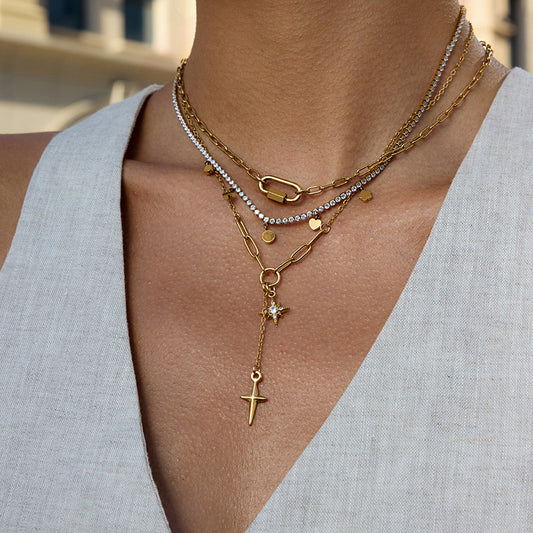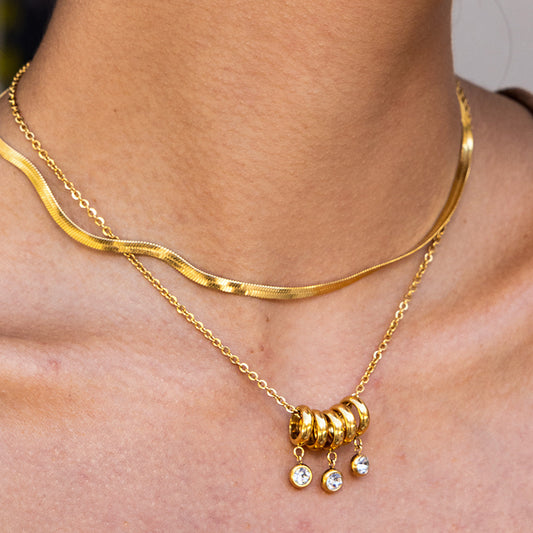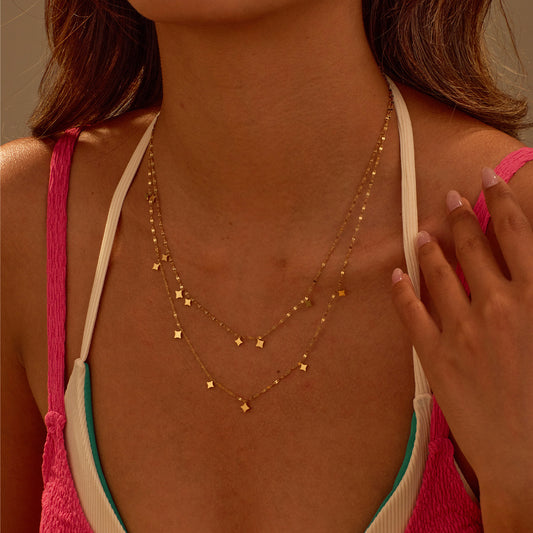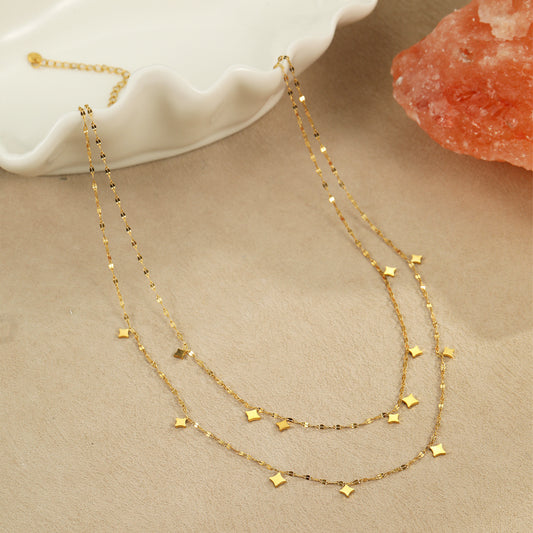Can stainless steel rust? It’s a question that crosses the mind of anyone shopping for durable, low-maintenance jewelry—and the simple answer is: it rarely does, but it’s not impossible. The global stainless steel market is projected to reach USD 197.29 billion by 2030—thanks largely to its reputation for rust resistance. This popularity stems from stainless steel’s unique composition (it contains at least 10.5% chromium, which forms a protective oxide layer) that fends off rust and tarnish. But while it’s far more resilient than regular steel, factors like harsh chemicals, scratches, or prolonged exposure to saltwater can compromise that protection. In this article, we’ll answer “Can stainless steel rust?” once and for all, plus explore why stainless steel jewelry is a go-to choice, how to style it, and how to keep it looking like new.
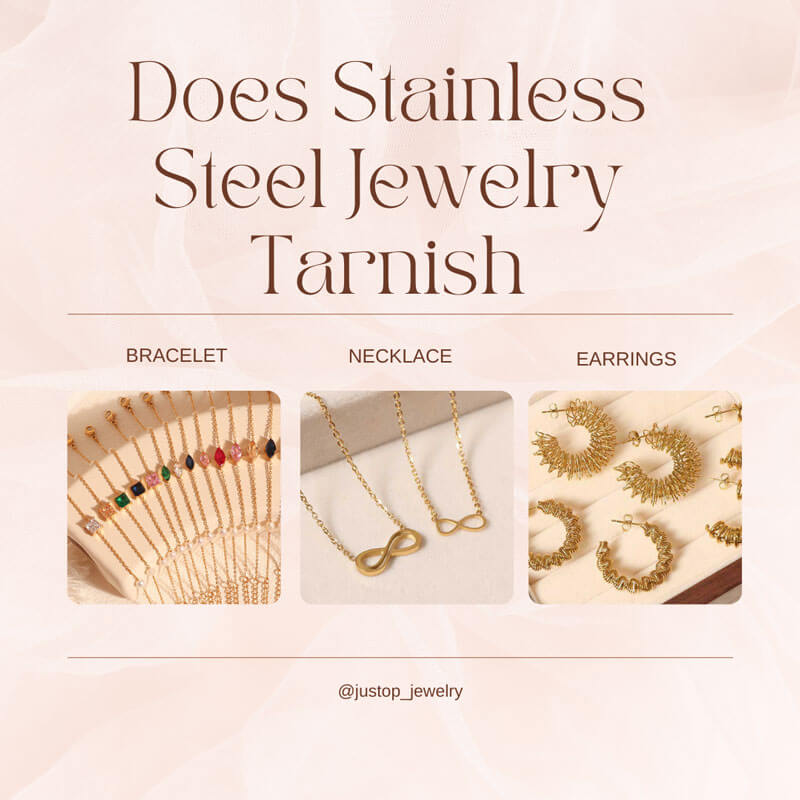
Can Stainless Steel Rust?
The Simple Answer: Rarely, But It Depends on the Type
To directly answer “Can stainless steel rust?”: High-quality stainless steel (like 304 or 316 grades, common in jewelry) rarely rusts under normal use—but low-quality stainless steel (with less chromium) or stainless steel exposed to harsh conditions can develop rust spots over time. The key to its rust resistance is chromium: when stainless steel is exposed to oxygen, chromium reacts to form a thin, invisible “passive layer” of chromium oxide on the surface. This layer acts as a shield, preventing moisture and oxygen from reaching the underlying metal and causing rust (oxidation).
When Stainless Steel Might Rust
Even with the passive layer, stainless steel can rust if the layer is damaged or compromised. Common triggers include:
-
Harsh Chemicals: Exposure to chlorine (swimming pools), saltwater (oceans), perfume, lotion, or cleaning products can break down the passive layer. For example, wearing a stainless steel ring in a chlorinated pool regularly may lead to tiny rust spots over 6–12 months.
-
Scratches or Dents: Deep scratches (from dropping the jewelry or scraping it against hard surfaces) can remove the passive layer. If the scratch isn’t cleaned or the layer doesn’t re-form (it needs oxygen to repair itself), rust can start at the damaged spot.
-
Low Chromium Content: Cheap stainless steel (with less than 10.5% chromium) lacks a strong passive layer. This is common in fast-fashion jewelry, which may rust after just a few weeks of wear.
-
Prolonged Moisture: Leaving stainless steel jewelry wet (e.g., not drying it after washing hands) can trap moisture against the metal, especially in crevices (like bracelet links), increasing rust risk.

How to Prevent Stainless Steel from Rusting
-
Choose the Right Grade: Opt for 304 or 316 stainless steel jewelry (more on 304 later)—these grades have higher chromium content and are designed for rust resistance.
-
Avoid Harsh Exposures: Remove jewelry before swimming, showering, applying perfume/lotion, or cleaning.
-
Clean Regularly: Wipe jewelry with a dry cloth after wear to remove sweat or oils; deep clean monthly (per the “How to clean” section) to maintain the passive layer.
-
Repair Scratches: For minor scratches, use a soft polishing cloth to buff the surface—this helps the passive layer re-form. For deep scratches, take it to a jeweler for professional polishing.

What is Stainless Steel Jewelry
Definition and Core Composition
Stainless steel jewelry is jewelry crafted from stainless steel—a corrosion-resistant alloy of iron, chromium (at least 10.5%), and often nickel, manganese, or molybdenum (to boost durability or shine). Unlike regular steel (which rusts easily), the chromium in stainless steel creates that protective passive layer, making it ideal for jewelry that’s worn daily. In jewelry, two grades are most common:
-
304 Stainless Steel: The standard for fashion jewelry—contains 18% chromium and 8% nickel. It’s rust-resistant, affordable, and has a bright, silver-like finish.
-
316 Stainless Steel: A “marine-grade” alloy with added molybdenum (2–3%), making it even more resistant to saltwater and chemicals. It’s pricier than 304 but perfect for beach lovers or those with sensitive skin (some 316 is nickel-free).
Key Traits of Stainless Steel Jewelry
-
Rust and Tarnish Resistance: As we answered earlier, “Can stainless steel rust?” is rarely a problem here—stainless steel jewelry won’t tarnish (unlike silver) or turn skin green (unlike copper or brass) under normal use.
-
Durability: It’s scratch-resistant and tough—stainless steel jewelry can withstand daily wear (even for active lifestyles) without bending or breaking easily. A well-made stainless steel necklace can last 5–10 years with proper care.
-
Hypoallergenic Options: While standard 304 stainless steel contains nickel (which can irritate sensitive skin), nickel-free 316 stainless steel is widely available—making it a safe choice for those with metal allergies.
-
Affordability: It’s far less expensive than precious metals (gold, silver, platinum) but offers a similar sleek, modern look. Most stainless steel jewelry ranges from \(15–\)100, making it accessible for all budgets.

How Stainless Steel Jewelry Differs from Other Metals
-
vs. Silver: Silver tarnishes quickly and needs frequent polishing; stainless steel stays bright with minimal care. Silver is also softer (prone to bending), while stainless steel is more durable.
-
vs. Gold-Plated Jewelry: Gold-plated jewelry wears off over time (exposing the base metal), leading to tarnish or skin discoloration; stainless steel’s finish is part of the alloy, so it won’t wear off.
-
vs. Copper/Brass: Copper and brass turn skin green and tarnish rapidly; stainless steel avoids both issues, making it better for everyday wear.
Why is Stainless Steel Jewelry so popular
Rust Resistance (Answering “Can Stainless Steel Rust?” for Peace of Mind)
The top reason stainless steel jewelry is popular is its answer to “Can stainless steel rust?”—its rare rusting means less maintenance and longer life. Unlike silver jewelry that needs polishing weekly or gold-plated pieces that wear out, stainless steel jewelry can be worn daily without worrying about tarnish or rust. For busy people (students, professionals, parents) who want stylish jewelry without the upkeep, this is a game-changer.
Durability for Active Lifestyles
Stainless steel jewelry is tough enough for gym workouts, outdoor adventures, or manual labor—something delicate jewelry (like pearl necklaces or thin gold chains) can’t handle. It won’t scratch easily if dropped, bend if caught on clothing, or break if you’re playing sports. This durability makes it a favorite for anyone who doesn’t want to “baby” their jewelry.
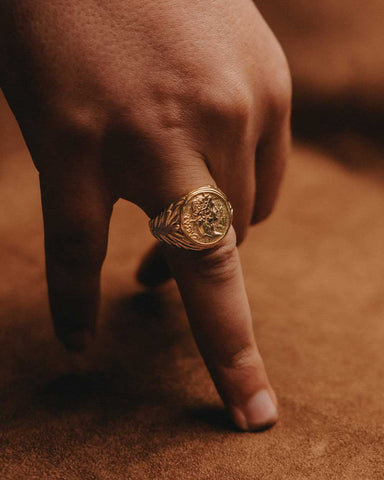
Affordability Without Sacrificing Style
Stainless steel jewelry offers the sleek, modern look of precious metals at a fraction of the cost. A stainless steel bracelet that looks like silver might cost \(20, while a similar silver bracelet could cost \)100+. This affordability means you can buy multiple pieces (e.g., a necklace, earrings, and ring) to mix and match, or replace a lost piece without breaking the bank.
Versatility Across Styles and Occasions
Stainless steel jewelry comes in endless designs—from minimalist bands to bold statement pieces—and complements every outfit. It pairs well with casual looks (jeans and a tee), workwear (blazers and slacks), and even formal attire (evening gowns). Its neutral silver, gunmetal, or rose gold-plated finishes (yes, stainless steel can be plated!) make it easy to integrate into any jewelry collection.
Popular styles of Stainless Steel Jewelry
Minimalist Stainless Steel Jewelry
-
Slim Band Rings: Thin, smooth stainless steel rings (2–3mm wide) with no extra details. Perfect for everyday wear or stacking with other rings. Some have tiny engravings (e.g., “Love” or initials) for a subtle personal touch.
-
Delicate Necklaces: Dainty stainless steel chains (16–18 inches) with small pendants (hearts, stars, or minimal geometric shapes). Lightweight and versatile—great for layering with other necklaces.
-
Stud Earrings: Small stainless steel studs (3–5mm) in round, square, or teardrop shapes. Hypoallergenic options are available, making them ideal for sensitive ears.
Statement Stainless Steel Jewelry
-
Chunky Bracelets: Wide stainless steel bracelets with links, cuffs, or woven designs. Often have a matte or brushed finish for a bold, industrial look—perfect for adding edge to casual outfits.
-
Layered Necklaces: Multiple stainless steel chains of different lengths, often with mixed pendants (e.g., a cross + a bar + a tiny gem). Trendy and eye-catching, great for festivals or date nights.
-
Hoop Earrings: Medium to large stainless steel hoops (1–2 inches in diameter) with a polished or hammered finish. Durable enough for daily wear—no need to worry about bending or breaking.
Plated Stainless Steel Jewelry
-
Rose Gold-Plated Stainless Steel: Stainless steel base with a thin rose gold plating. Offers the warm, romantic look of rose gold without the high cost. Popular styles include rose gold-plated rings and layered necklaces.
-
Gold-Plated Stainless Steel: Polished gold plating over stainless steel. Looks like solid gold but is far more affordable and durable. Great for those who love gold jewelry but want something low-maintenance.
-
Black Plated Stainless Steel: Gunmetal or black plating over stainless steel. Edgy and modern—perfect for gothic, minimalist, or street-style looks. Common in bracelets and earrings.
Personalized Stainless Steel Jewelry
-
Engraved Bracelets: Stainless steel bangles or link bracelets engraved with names, dates, or quotes (e.g., “Best Friend” or a wedding date). Durable and sentimental—great for gifts.
-
Birthstone Necklaces: Stainless steel pendants with small birthstone accents (often cubic zirconia or genuine gemstones). Personalized and stylish—ideal for birthdays.
-
Coordinate Jewelry: Stainless steel necklaces or rings engraved with latitude/longitude coordinates (e.g., of a first date or hometown). Unique and meaningful, perfect for everyday wear.
How to wear Stainless Steel Jewelry
Everyday Casual Vibe
-
Jeans and Graphic Tee: Pair a chunky stainless steel bracelet (gunmetal finish) with high-waisted blue jeans, a white graphic tee, and white sneakers. The bold bracelet adds edge to the casual look without overwhelming it.
-
Leggings and Oversized Sweater: Wear a delicate stainless steel necklace (with a small heart pendant) and stud earrings with black leggings, an oversized cream sweater, and ankle boots. The minimalist jewelry keeps the outfit cozy but polished.
Professional Work Vibe
-
Blazer and Tailored Pants: Opt for a gold-plated stainless steel necklace (thin chain with a small bar pendant) and a slim stainless steel ring with a navy blazer, white silk blouse, and tailored black pants. The gold plating adds warmth, while the stainless steel’s durability means you don’t have to remove it during meetings or typing.
-
Midi Skirt and Button-Down: A rose gold-plated stainless steel bracelet and small hoop earrings pair with a light blue button-down, beige midi skirt, and loafers. The rose gold complements the neutral outfit, adding a subtle feminine touch.
Special Occasion Vibe
-
Date Night: Wear a layered stainless steel necklace (mixed gold and silver chains with small pendants) and black plated stainless steel hoop earrings with a little black dress and strappy heels. The layered necklaces add texture, while the hoops add glamour.
-
Wedding Guest: A silver stainless steel cuff bracelet (with tiny CZ accents) and stud earrings complement a floral midi dress and wedges. The cuff is statement-making but not too flashy—perfect for celebrating without upstaging the bride.
Styling Tips
-
Mix Metals (If You Want): Stainless steel jewelry pairs well with other metals—e.g., mix a silver stainless steel necklace with a gold-plated bracelet for a trendy two-tone look.
-
Stack Strategically: Stack slim stainless steel rings or bracelets of different finishes (polished, brushed, plated) for a layered effect. Stick to 2–3 pieces per stack to avoid clutter.
-
Match to Outfit Accents: If your outfit has silver zippers or buttons, choose silver stainless steel jewelry; if it has rose gold details, opt for rose gold-plated pieces.
Stainless Steel Jewelry: perfect gift for your girlfriend
Durable Enough for Her Daily Routine
Stainless steel jewelry is a perfect gift for your girlfriend because it’s tough enough to keep up with her busy life. Whether she’s a student, a nurse, a teacher, or an athlete, she can wear it daily without worrying about tarnish, rust (as we answered earlier, “Can stainless steel rust?” is rarely an issue), or breakage. Unlike delicate jewelry that sits in a box, this is a gift she’ll actually use—and love—every day.
Fits Her Style (No Matter What She Likes)
With so many styles (minimalist, statement, plated, personalized), you can find a stainless steel piece that matches her aesthetic:
-
Minimalist Girlfriend: A thin stainless steel necklace with a tiny star pendant.
-
Edgy Girlfriend: A black plated stainless steel cuff bracelet.
-
Sentimental Girlfriend: An engraved stainless steel bracelet with your anniversary date or a quote that’s meaningful to both of you.
This personalization shows you pay attention to her taste, making the gift feel thoughtful.
Affordable Yet Thoughtful
Stainless steel jewelry is budget-friendly (most pieces cost \(20–\)80), so you can give her a beautiful, high-quality gift without overspending. Even if you’re on a tight budget, you can find a piece that feels special—like a personalized engraved necklace or a birthstone pendant. And because it’s durable, it’s a gift that will last for years, not just a few weeks.
Hypoallergenic for Sensitive Skin
If your girlfriend has sensitive skin (and reacts to nickel in other metals), nickel-free stainless steel (like 316 grade) is a safe choice. She can wear it all day without redness, itching, or irritation—something she’ll appreciate if she’s struggled to find jewelry that’s both stylish and comfortable.
How to clean Stainless Steel Jewelry
Supplies Needed
-
Mild dish soap (unscented, dye-free)
-
Warm water (not hot—hot water can damage plated finishes)
-
Soft-bristled toothbrush (unused, for small crevices)
-
Lint-free cloth (microfiber or cotton)
-
Stainless steel polish (optional, for restoring shine to dull pieces)
Step-by-Step Cleaning Process
-
Basic Cleaning for Daily Maintenance:
-
Mix 1 drop of mild dish soap with 1 cup of warm water in a small bowl.
-
Dip a soft cloth into the soapy water, wring it out thoroughly, and gently wipe the stainless steel jewelry to remove sweat, oil, or dirt.
-
For pieces with links (like bracelets) or engravings, use the soft toothbrush to gently scrub between links or in crevices—this removes trapped grime that can dull the finish.
-
Rinse the jewelry under warm water to remove soap residue, then dry immediately with a lint-free cloth. Make sure it’s completely dry—moisture left on the surface can increase rust risk (answering “Can stainless steel rust?” by preventing it!).
-
Deep Cleaning for Dull or Tarnished Pieces:
-
If the jewelry looks dull (not rusty), apply a small amount of stainless steel polish to a lint-free cloth and buff the surface in circular motions. This restores shine without damaging the metal.
-
For plated stainless steel (rose gold or gold), skip the polish—use a damp cloth only, as polish can wear off the plating.
-
For small rust spots (if they do appear), make a paste of baking soda and water (1:1 ratio), apply it to the spot with a cotton swab, and gently scrub. Rinse and dry immediately—this should remove the rust without scratching the metal.
Maintenance Tips
-
Dry After Wear: Wipe the jewelry with a dry cloth every time you take it off (especially after sweating or washing hands) to remove moisture.
-
Store Properly: Keep stainless steel jewelry in a dry, airtight jewelry box or a soft pouch. Avoid storing it with other metals (like silver or copper) that can transfer tarnish.
-
Avoid Harsh Exposures: As mentioned earlier, remove jewelry before swimming, showering, or applying perfume/lotion to prevent chemical damage and rust.
Can 304 Stainless Steel Rust
The Answer: Even Less Likely Than Low-Grade Stainless Steel
To answer “Can 304 stainless steel rust?”: 304 stainless steel (the most common grade in jewelry) is highly rust-resistant and rarely rusts under normal use—but it’s not 100% rust-proof. 304 stainless steel contains 18% chromium and 8% nickel, which creates a strong, stable passive layer that fends off rust far better than low-grade stainless steel (with less chromium). For jewelry, this means a 304 stainless steel ring or necklace can be worn daily for years without rusting—even if exposed to occasional moisture (like washing hands) or minor scratches.
When 304 Stainless Steel Might Rust
While rare, 304 stainless steel can rust if:
-
Exposed to Chlorine or Saltwater Long-Term: Wearing a 304 stainless steel bracelet in a chlorinated pool every day for months can break down the passive layer, leading to tiny rust spots. Similarly, wearing it to the beach daily without cleaning can cause salt buildup that erodes the layer.
-
Scratched Deeply and Not Cleaned: A deep scratch (e.g., from scraping against concrete) that removes the passive layer, followed by prolonged moisture (e.g., not drying the scratch), can let rust form at the damage site.
-
Exposed to Strong Chemicals: Harsh cleaning products (like bleach or ammonia) or industrial chemicals can dissolve the chromium oxide layer, leaving the metal vulnerable to rust.
Why 304 Stainless Steel Is Still a Great Choice for Jewelry
Even with these rare risks, 304 stainless steel remains ideal for jewelry because:
-
Everyday Use Is Safe: For typical wear (work, errands, casual outings), it won’t rust—most people never experience rust with 304 jewelry.
-
Easy to Maintain: A quick wipe with a dry cloth after wear and monthly cleaning keeps the passive layer strong.
-
Affordable and Accessible: It’s widely available in jewelry designs (from minimalist rings to statement necklaces) at budget-friendly prices, making it a practical choice for most shoppers.
If you’re worried about extreme exposure (e.g., frequent beach trips), opt for 316 stainless steel (marine-grade) instead—but 304 is more than sufficient for most people’s needs.
Frequently asked questions about Stainless Steel Jewelry
Is stainless steel jewelry hypoallergenic?
It depends on the grade and nickel content:
-
Standard 304 Stainless Steel: Contains 8% nickel, which can irritate people with severe nickel allergies (about 10–15% of the population). If your skin turns red or itchy with nickel, this may not be ideal.
-
Nickel-Free 316 Stainless Steel: Many 316 grades are “low-nickel” or nickel-free (using manganese instead), making them hypoallergenic. These are labeled as “nickel-free” or “hypoallergenic” by jewelers—perfect for sensitive skin.
-
Plated Stainless Steel: Gold or rose gold-plated stainless steel adds a barrier between the metal and skin, reducing nickel exposure. Just ensure the plating is thick (2–3 microns) to avoid wear-through.
Always check product descriptions for “hypoallergenic” or “nickel-free” labels if you have sensitive skin.
Does stainless steel jewelry turn skin green?
No—stainless steel jewelry rarely turns skin green. Unlike copper or brass (which react with sweat to form green oxides), stainless steel’s chromium oxide layer prevents the metal from leaching into skin. The only exception is low-quality stainless steel (with high copper content instead of chromium)—these may cause mild discoloration, but they’re not true stainless steel. For genuine 304 or 316 stainless steel, skin greening is not a concern.
Can stainless steel jewelry be resized (e.g., rings)?
Yes—most stainless steel rings can be resized, but it’s trickier than resizing gold or silver:
-
Simple Bands (No Stones/Engravings): Easy to resize—jewelers use specialized tools to cut the band, adjust the circumference, and solder it back together. Avoid resizing more than 1–2 sizes up or down, as this can weaken the metal.
-
Rings with Stones or Engravings: Resizing is possible but risky—stones may need to be temporarily removed, and engravings could be distorted. It’s best to choose a ring in your correct size initially, but a skilled jeweler can handle minor adjustments.
-
Plated Stainless Steel: Resizing can wear off the plating, so you’ll need to have the ring re-plated after resizing to restore its look.
How long does stainless steel jewelry last?
With proper care, stainless steel jewelry can last 5–10 years or more—some people even keep it for decades. The key to longevity is:
-
Choosing high-grade stainless steel (304 or 316).
-
Avoiding harsh exposures (chlorine, saltwater, chemicals).
-
Cleaning and drying it regularly.
Unlike gold-plated jewelry (which wears off in 6–12 months) or silver (which tarnishes quickly), stainless steel’s durability means it’s a long-term investment.
Can stainless steel jewelry be polished if it gets dull?
Yes—dull stainless steel jewelry can be easily polished to restore its shine:
-
For Polished Finishes: Use a stainless steel polish cloth (available at jewelry stores or online) to buff the surface in circular motions. This removes minor scratches and brings back the metal’s luster.
-
For Brushed Finishes: Use a soft-bristled brush (like a toothbrush) to gently scrub the surface in the direction of the brush lines—this preserves the brushed texture while removing dullness.
-
For Plated Stainless Steel: Use a damp, lint-free cloth only—polish can wear off the plating. If the plating fades significantly, some jewelers offer re-plating services.
Conclusion: Can Stainless Steel Rust? The Simple Answer You Need
To circle back to the question that started it all—“Can stainless steel rust?”—the simple answer is: rarely, especially if you choose high-grade stainless steel (like 304 or 316) and care for it properly. Stainless steel jewelry’s rust resistance, combined with its durability, affordability, and versatility, makes it a standout choice for everyday wear, gifts, and even special occasions. Whether you’re shopping for a minimalist necklace for yourself or an engraved bracelet for your girlfriend, it offers the sleek look of precious metals without the high maintenance or price tag.
Ready to find stainless steel jewelry that’s built to last (and resist rust)? Explore our curated collection today—featuring 304 and nickel-free 316 stainless steel pieces, from slim rings and delicate necklaces to bold cuffs and personalized engravings. We offer free shipping on orders over $35, a 60-day return policy, and detailed product descriptions (so you know exactly what grade you’re getting). Whether you’re new to stainless steel or a longtime fan, let us help you find pieces that fit your style and stand the test of time. Shop now—and enjoy rust-resistant jewelry that looks great for years to come!


